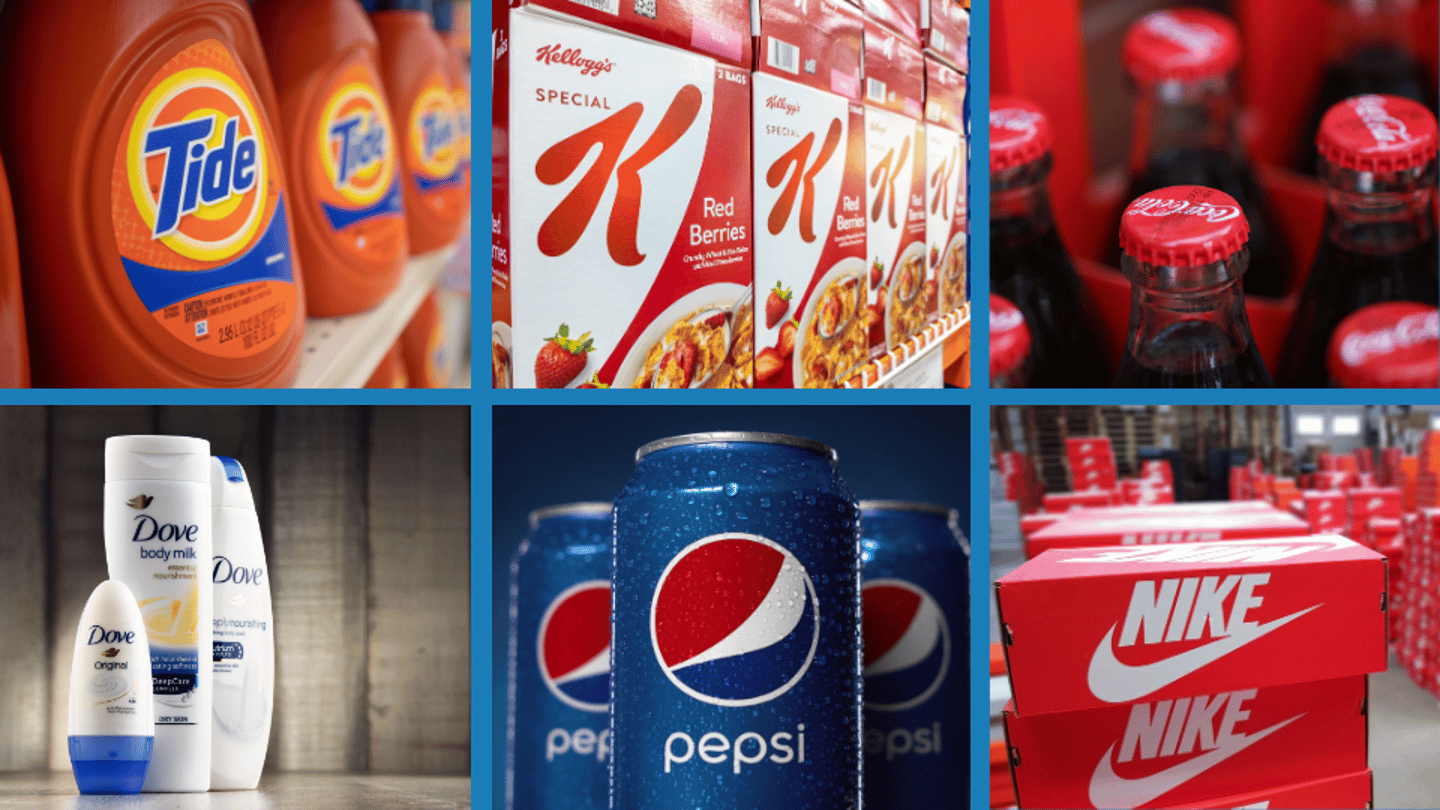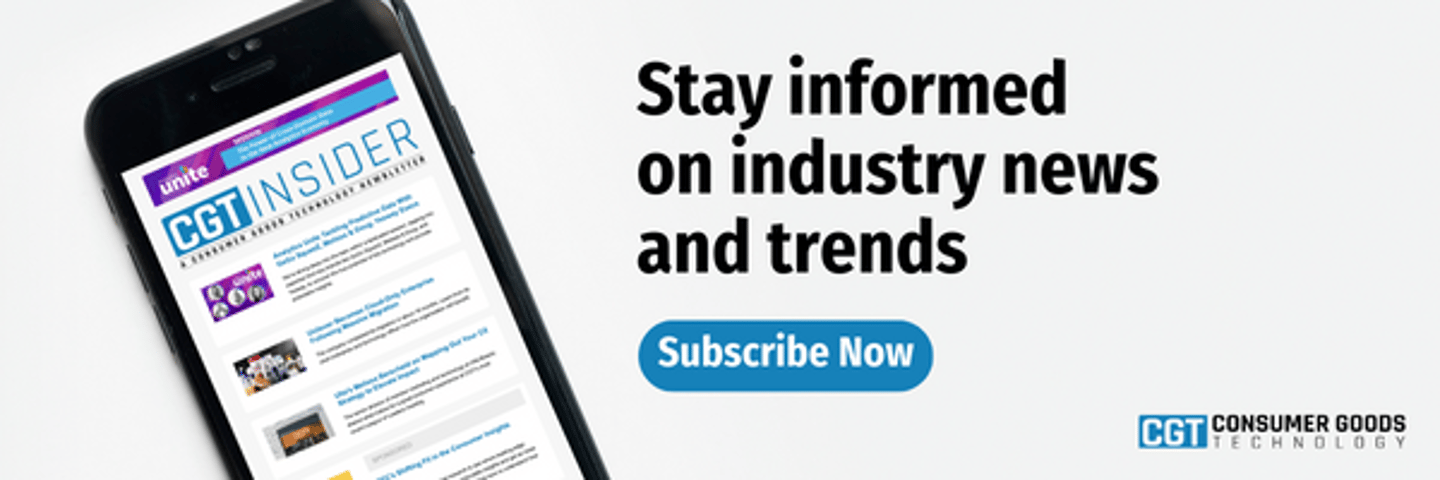2024 CPG Tech Budget Priorities
The outlook for 2024 has become somewhat of a familiar theme, and CPGs are no exception: Cut or maintain spending next year — except when it comes to tech.
“There was a view in the industry a few years ago that you needed to hold technology spend down, and one of the things we’re calling out … is the central role of technology in shaping corporate strategy and shaping ambition,’’ says Oliver Wright, global lead for consumer goods at Accenture. The firm expects tech spending to increase, although Wright has “no sense of percentage” right now.
CPG customers are taking an overall cautious approach to spending vs. last year, in part due to the macro-economic environment, agreed Anup Prasad, SVP and consumer business unit head at Cognizant. "However, spend on digital initiatives and business transformation continues to be a priority for the majority of brands.”
Companies may nonetheless take a more conservative view toward spending next year.
“Corporate spending on most things, including IT, has been softening over the past 12 months,’’ says Jerry Thomas, president and CEO of Decision Analyst, a research firm whose clients include consumer goods companies.
Key Spend Priorities
Not surprisingly, digital spending will continue full-steam ahead because many CPGs don’t have the digital infrastructure in place for foundational data and security protocols, according to Wright. “So we’re assuming a vast majority of players … will need to put bedrock investments in place to ensure their digital cores [are solid.]”
This is delaying many companies’ growth ambitions, Wright adds. “I talked to a big CPG a few weeks ago and they said their growth plans were delayed because their digital core foundation isn’t totally in place.”
When it comes to strategizing on core tech spending, “probably 60% of the big [CPG] players are integrating technology, data, and, increasingly, science into their planning,’’ Wright says. “Our assumption is that number will steadily rise.” This includes data and analytics, accelerated by generative AI, he says.
See how Consumer Goods Companies are Investing in Tech Across Sales and Marketing
Cognizant sees CPG customers prioritizing technology capabilities across six key focus areas:
- Sales transformation with customer experience at the core
- Performance marketing capabilities that help realize the improved value of marketing technology investments
- Intelligent supply chain capabilities such as integrated business planning, smart manufacturing, and logistics
- Demand-led design and engineering capabilities such as product and package design, PLM, and SKU lifecycle management.
- Revenue growth management by utilizing technology while designing strategy around pricing, promotions, and retailer relationships
- Modernizing data platforms across customer, supplier, and product value streams with an emphasis on AI
Some of the new/newer technologies CPGs are investing in are to build platforms that can improve overall time to market, Prasad says.
Part of the “exercises” Accenture does with corporations is to look at the technologies that will drive competitive differentiation and delve into the capabilities required for success. One is the omni-connection of the consumer to ensure you have the right connections with consumers and end customers across all channels in a cost-effective way, Wright says.
Accenture has identified 14 omni channels, and “clients are adding further slivers … all the time.” For example, one trend is the increasing fragmentation of social commerce and meeting consumers wherever they are. This will require CPGs to build the right capabilities and capacity to seamlessly orchestrate activities within and across channels.
Wright suspects social commerce will grow as more people sell items in channels such as TikTok or Instagram, and consumers will organize to buy products in groups as a “volume play.”
Integrated business planning and smart manufacturing will be other areas where CPGs invest in 2024 says Wright, Echoing Prasad. This means “going from understanding those consumer signals all the way through the business planning cycle into what’s actually going to get manufactured,’’ he says.
A third area is a focus on more digitally-based manufacturing and the ability to optimize more information about how a product is made with greater flexibility to make changes, he says.
Spending will also continue on the nuts-and-bolts technologies, says Thomas, including hardware and software systems — especially those related to security, AI, and machine learning, as well as to continue migrations to the cloud.
In terms of “wish list” technologies, Prasad says the metaverse and Web 3 are still on there, but that there are not enough proof points or relevant use cases yet.
Where Generative AI Fits In
CPGs — like virtually every industry — are very excited about the promise of generative artificial intelligence. “But no one knows much about how it actually works, how safe it is, or how accurate it might be for various applications,’’ observes Thomas. That said, he adds that “virtually every large consumer goods company is experimenting with generative AI and will adopt it as applications prove accurate and useful.”
Generative AI is relevant across the CPG value chain, from product innovation and R&D to hyper-personalized digital marketing and advertising campaigns, agrees Prasad.
“There is also a meaningful opportunity for enhanced customer service through the analysis of customer queries and recommendations of relevant and personalized solutions enabled by customer contact centers,’’ he says.
Generative AI is “clearly something that every single CPG is fitting into their plans,” mainly for productivity purposes, says Wright, adding that about one-quarter of productivity value should come from generative AI tools in the next year or two.
Common Roadblocks to Securing Stakeholder Buy-In and Proving ROI
Budget planning can also be fraught with obstacles. One of the key roadblocks “seems to be how much change can organizations and customers manage at once,’’ says Prasad.
Thomas dismisses the notion that companies can glean real ROI into their tech investments, saying that such analyses “are rarely accurate or reliable because no one is very good at forecasting the future.”
The biggest barriers he sees to the adoption of any new technology are bureaucracy, fear of making big decisions, and lack of knowledge and understanding related to the new technology.
“Leadership comfort and an understanding of technology and what it can do,” are the biggest roadblocks for Wright. Even though it has been preached before, he says IT must educate leadership on the technology art of the possible.
Most organizations also have too many initiatives underway and need to conduct an exercise around how to rationalize their current initiatives to get them to where they want them to be, Wright says. Very few companies have done that, he maintains.
“The effect of rebalancing the [tech] portfolio is an issue,’’ along with interdependencies. Often, tech initiatives are launched by different business units but “they are not sufficiently lined up,” he points out.
CPG Sustainability Goals
Science is becoming increasingly important to the consumer goods industry, which will have to deal with decarbonization if it wants to continue to evolve over the next 10 to 15 years, according to Wright. This will require a mandate “to accelerate for the art of the possible.”
CPGs are realizing the enormity of the challenge of reorienting consumers to behave more sustainably. “We think it’s going to be hard to make humans more sustainable so we have to make sustainability more human,’’ he says.
For example, there is a very low rate of recycling of plastic packaging “because consumers don’t know what they can recycle. The question is, can you drive innovation so consumers don’t have to make a choice.”
The same goes for figuring out what can be done with alternative proteins to reduce consumers’ level of meat consumption, Wright says. “We estimate by 2050, the entire greenhouse envelope will be taken up by red meat alone … it’s a sobering thought. So the question is, how can you inject science” into technology to play a central role and change a company’s green portfolio so consumers aren’t conscious of the change?”
Prasad says that sustainability goals are increasingly becoming a brand differentiator and a priority for CPG customers.
“A sustainability-first mindset is essentially helping CPG customers target and attract millennial consumers who align themselves better to sustainability values and priorities,’’ he says. “Sustainability goals and aligning transformation initiatives to them are considered a hygiene factor for a successful brand.”







